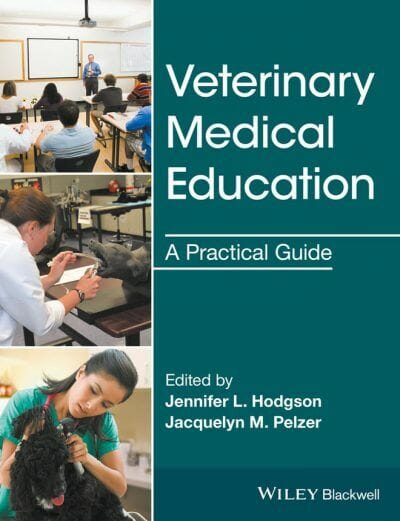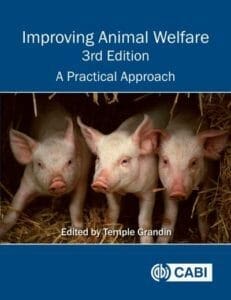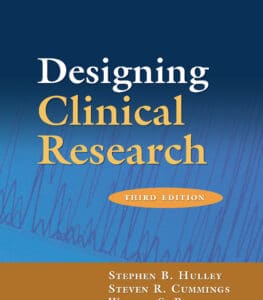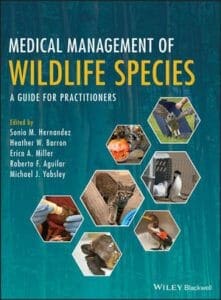List of Contributors xi
Preface xix
Part I The Curriculum 1
1 Curricular Design, Review, and Reform 3
Jennifer Hodgson and Jan Ilkiw
2 Competency-Based Education 24
Harold G.J. Bok and A. Debbie C. Jaarsma
3 Curriculum Mapping 36
Karen Dyer Inzana
Part II Learning and Teaching Strategies 43
4 Learning Concepts and Theories, and Their Application to Educational Practice 45
Stephen May
5 Integrated Learning 64
Jan E. Ilkiw
6 Collaborative Learning 79
Elizabeth Tudor, Laura Dooley and Elise Boller
7 Teaching Interprofessionalism 101
John H. Tegzes
8 Peer-Assisted Learning 116
Laura K. Molgaard and Emma K. Read
Part III Learning Opportunities 131
9 Learning in Classrooms and Laboratories 133
Susan M. Matthew, Jacqueline M. Norris and Mark B. Krockenberger
10 Learning and Teaching in Clinical Skills Laboratories 151
Marc Dilly and Sarah Baillie
11 Learning in the Electronic Age 163
Jodi A. Korich and Lisa M. Keefe
12 Learning in the Veterinary Teaching Hospital 178
Elizabeth M. Hardie
13 Learning in Real-World Settings 196
Tim J. Parkinson
Part IV Assessing the Student 217
14 Concepts in Assessment 219
Jared Danielson and Kent Hecker
15 Written Assessment 237
Jared Danielson and Kent Hecker
16 Performance and Workplace-Based Assessment 255
Kirsty Magnier and Matthew Pead
17 Feedback 273
Karen K. Cornell
18 Academic Standards and Progression 286
Kristin P. Chaney, Kenita S. Rogers and Virginia Fajt
Part V Assessing the Program 299
19 Assessing Teaching Effectiveness 301
Susan M. Rhind and Catriona E. Bell
20 Assessing the Assessment Process 316
Kent Hecker and Jared Danielson
21 Institutional Benchmarking 325
Paul C.Mills and Rosanne M. Taylor
22 Accreditation 338
Margaret V. Root Kustritz, Karen Martens Brandt and Malathi Raghavan
Part VI Teaching and Assessing Professional Competencies 355
23 Communication 357
Cindy L. Adams and Suzanne M. Kurtz
24 Clinical Reasoning Skills 380
Jill Maddison
25 Professionalism 396
India Lane and Liz Mossop
26 Working in Professional Teams 419
Tierney Kinnison, David Guile and Stephen May
27 Lifelong Learning and Reflective Practice 433
Esther de Groote and N.J.J.M. Mastenbroek
28 Ethics and Animal Welfare 448
Joy Maree Verrinder and Clive J.C. Phillips
29 Cultural Competence 466
Lisa M. Greenhill, Kauline Cipriani, William Gilles and Kimathi Choma
30 Business and Practice Management Skills 479
Gary J. Burt
Part VII The Educational Environment 495
31 Student Selection 497
Jacquelyn Pelzer and Eloise Jillings
32 Student Learning Environment 511
Sue Roff and Sean McAleer
33 The Hidden Curriculum 525
Liz Mossop
34 Student Support and Wellness 540
McArthur Hafen Jr., Adryanna Siqueira-Drake and Bonnie R. Rush
35 Students with Disabilities in Veterinary Education 558
Joseph Taboada and Stephanie Johnson
36 Teaching the Teacher 572
Ayona Silva-Fletcher
37 Scholarship in Veterinary Education 589
Harold G.J. Bok, Peter van Beukelen and A. Debbie C. Jaarsma
Part VIII Future Directions 599
38 Veterinary Medical Education: Envisioning the Future 601
Cyril R. Clarke and Jennifer L. Hodgson
Index 613














![Ettinger’s Textbook of Veterinary Internal Medicine 9th Edition [PDF+Videos] Ettinger’s Textbook of Veterinary Internal Medicine 9th Edition [True PDF+Videos]](https://www.vet-ebooks.com/wp-content/uploads/2024/10/ettingers-textbook-of-veterinary-internal-medicine-9th-edition-100x70.jpg)

![Textbook of Veterinary Diagnostic Radiology 8th Edition [PDF+Videos+Quizzes] Thrall’s Textbook of Veterinary Diagnostic Radiology, 8th edition PDF](https://www.vet-ebooks.com/wp-content/uploads/2019/09/textbook-of-veterinary-diagnostic-radiology-8th-edition-100x70.jpg)






